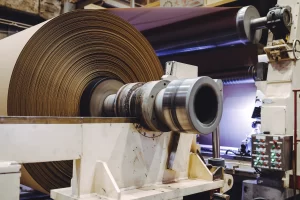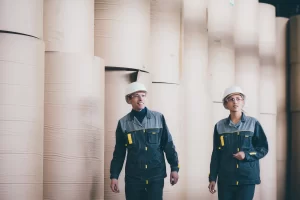Paper-Making Grade Carboxymethyl Cellulose
Our factory specializes in the production of paper-making grade CMC, which plays a pivotal role in the paper industry. Acting as a high-performance binder, thickener, and stabilizer, our CMC enhances the strength and workability of paper. It improves the ink retention and sheet formation, leading to higher quality paper with excellent texture and durability. We utilize sustainable practices and advanced technology to produce CMC that meets stringent quality standards, ensuring our clients receive a product that not only meets their needs but also supports environmentally friendly manufacturing processes. Our commitment to innovation and customer service positions us as a leading supplier in the paper-making chemical sector.
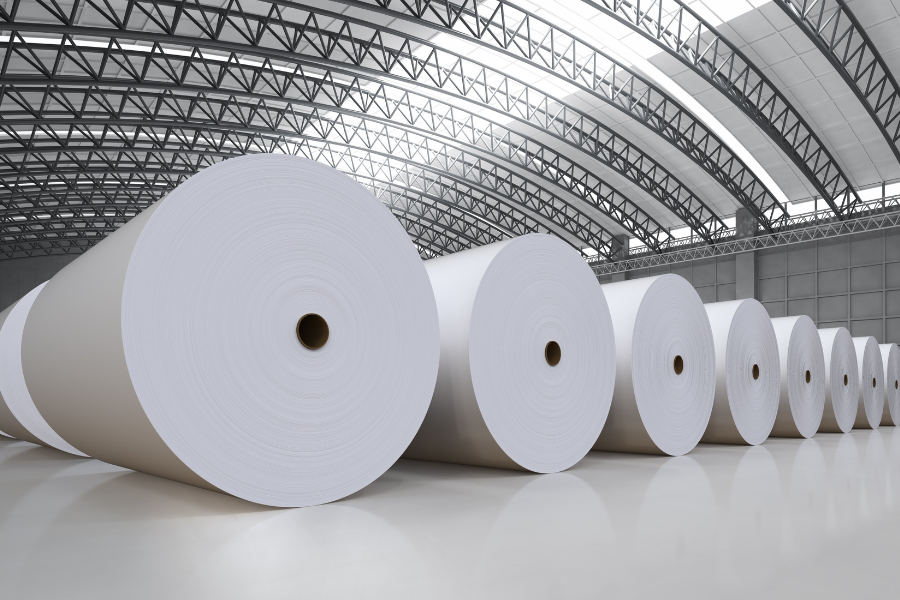
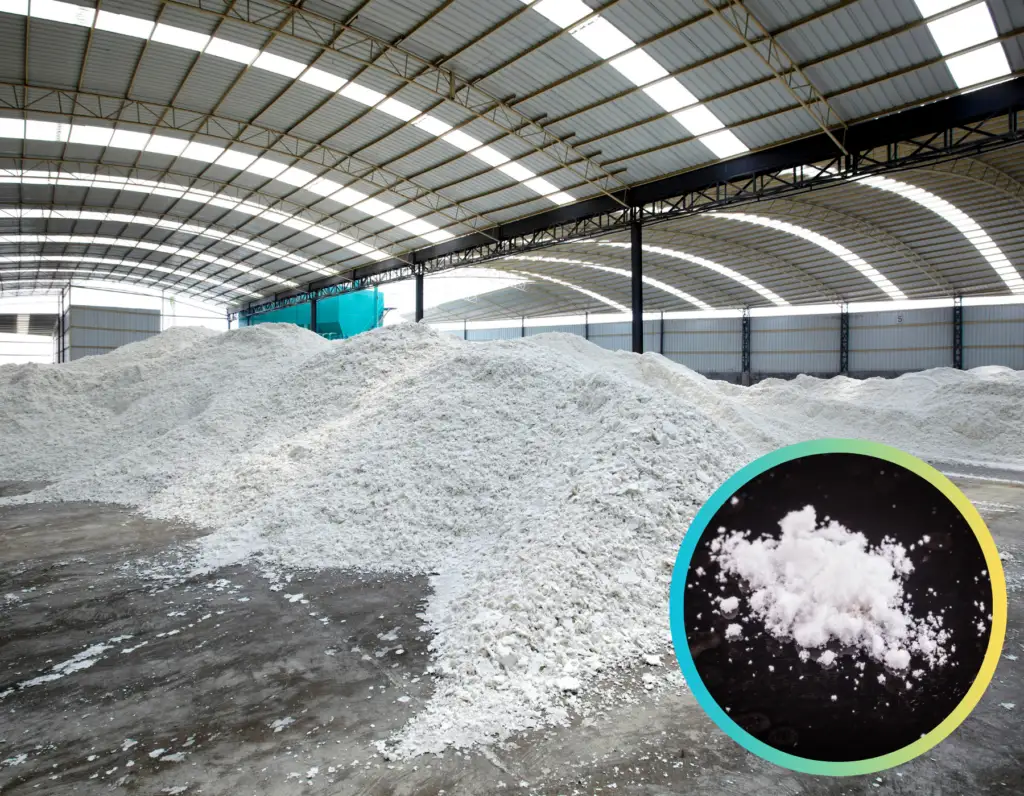
In the papermaking industry, Carboxymethyl Cellulose (CMC) is employed during the pulping process to enhance retention and increase wet strength. When used for surface sizing, it acts as a rheology modifier for pigments, improving internal bonding strength, reducing printing dust, and elevating print quality. As a coating agent for paper, CMC aids in the dispersion and fluidity of pigments, which in turn enhances the gloss, smoothness, optical properties, and printability of the paper. CMC’s value and widespread use as an additive in the paper industry stem mainly from its film-forming capabilities and resistance to oil as a water-soluble polymer.
Our factory produces premium Paper-Making Grade Carboxymethyl Cellulose (CMC), an essential additive for the paper industry. Choosing our CMC ensures improved pulp retention, enhanced wet strength, and superior paper texture. It boosts internal bonding, reduces dust during printing, and significantly uplifts print quality. Moreover, our CMC optimizes pigment dispersion, elevating the smoothness and optical quality of paper for impeccable printability. We invite inquiries for a product that not only excels in performance but also supports sustainable paper production.
Paper-Making Grade CMC FEATURES
Our Paper-Making Grade Carboxymethyl Cellulose (CMC) features exceptional qualities, crucial for the papermaking process. It significantly improves pulp retention, thus minimizing resource waste. The addition of CMC to paper pulp enhances the wet strength of paper, a vital attribute for durable paper products. It also acts as a formidable sizing agent, improving the internal bond strength of paper, which is essential for high-quality printing. The CMC we produce is also a superb film-former, providing a barrier that improves oil resistance and ink absorption. When used in coating applications, it optimizes pigment dispersion and paper smoothness, resulting in a notable increase in gloss and optical performance. These features collectively make our CMC an indispensable additive for creating paper products that are not only strong and durable but also have a premium appearance and feel.
Water Retention
Carboxymethyl Cellulose (CMC) serves as an excellent water retention agent, significantly enhancing the hydration of paper products. Its hydrophilic nature allows for the absorption and retention of water, reducing syneresis and improving the overall consistency of coated papers. The water retained by CMC in the paper-making process helps in maintaining the desired moisture level, ensuring a controlled drying process, which is crucial for the quality and durability of the final paper product.
Bonding Strength
CMC's ability to increase bonding strength is integral to the paper-making industry. As an anionic water-soluble polymer, it facilitates stronger fiber-to-fiber bonds, which are essential for improving the tensile strength and durability of paper. The addition of CMC to paper pulp results in a more cohesive matrix, providing a uniform structure that enhances the final product's resistance to tearing and other forms of mechanical stress.
Lubricant Effect
The lubricant properties of CMC contribute to a smoother surface on the paper, easing the way for other materials to glide over without causing damage or undue wear. This characteristic is particularly beneficial during the paper-making process, where it minimizes friction between fibers, machinery, and other additives, leading to more efficient production runs and a finer quality finish on the paper.
Film-Forming Property
CMC exhibits exceptional film-forming properties, which contribute to the creation of a smooth, protective layer on paper products. This film not only enhances the appearance of the paper but also provides a barrier against oil, grease, and other contaminants. The thin, yet robust, CMC film can improve the printability of paper by providing a uniform surface, which ensures better ink adherence and image clarity.
Pseudoplasticity
Carboxymethyl Cellulose exhibits pseudoplasticity, meaning it becomes less viscous under shear stress. This property is beneficial in paper coating applications where CMC solutions can be easily applied at high shear rates, and once the shear force is removed, they regain their original viscosity. This helps in the even distribution of the coating on the paper surface, resulting in a uniform consistency and texture of the paper product.
Stability
The stability of CMC is a crucial characteristic, particularly in varying pH and temperature conditions during the paper-making process. Its chemical structure confers resistance to enzymatic degradation, and it maintains its integrity over a wide range of environmental conditions. This stability ensures that the quality and functionality of CMC are preserved throughout the manufacturing process, providing reliability and consistency in the performance of the finished paper product.
Paper-Making CMC SPECIFICATION
Our Paper-Making Grade CMC is tailored with precise specifications: a high degree of substitution (0.7-0.9 DS) ensuring solubility and efficacy in paper processes, a viscosity range of 300-8000 mPa.s (1% aqueous solution), pH 6.5-8.5 for optimal chemical stability, and a purity over 99.5%, guaranteeing minimal impurities. These specifications ensure peak performance in paper production, from improving texture to enhancing durability.
| Type | Viscosity, cps(25*C) Brookfield Viscometer | PH | Loss on Drying,% | Degree of Substitution | Usage field |
| NX-BW1 | 500-1500 (4%) | 6.0-8.5 | <10.0 | ≥0.60 | pulping |
| NX-BW2 | 1000-2500 (4%) | 6.0-8.5 | <10.0 | ≥0.70 | pulping |
| NX-30 | 250-500 (4%) | 6.0-8.5 | <10.0 | ≥0.80 | Top sizing ,coating |
| NX-150 | 1000-2000 (4%) | 6.0-8.5 | <10.0 | ≥0.80 | Top sizing |
| NX-300 | 2000-4000 (4%) | 6.0-8.5 | <10.0 | ≥0.80 | Top sizing |
| NX-700 | 400-1000 (2%) | 6.0-8.5 | <10.0 | ≥0.80 | Top sizing |
| NX-5 | 20-50 (4%) | 6.0-8.5 | <10.0 | ≥0.85 | coating |
| NX-10 | 100-250(4%) | 6.0-8.5 | ≤10.0 | ≥0.85 | coating |
| NX-BW | ≤20(2%) | 6.0-9.5 | ≤10.0 | 0.9-1.1 | pulping |
Paper-Making CARBOXYMETHYL CELLULOSE Effect
CMC (Carboxymethyl Cellulose) is used in the preparation of coating formulations for coated paper, where it enhances the water retention of the coating to prevent water-soluble adhesives from migrating into the paper, thus improving leveling and coating quality. CMC acts as an excellent adhesive, providing strong binding power – one part CMC can replace 3-4 parts of modified starch or 2-3 parts of starch derivatives. It can also reduce the amount of latex needed, which is beneficial for increasing the solid content of the coating. During application, CMC acts as a lubricant, promoting film separation with good film-forming properties, giving the coating an excellent gloss and preventing orange peel texture. Its pseudoplastic nature, as mentioned in my previous articles on the chemical properties of sodium carboxymethyl cellulose, imparts thixotropy to the coating. This means under high shear conditions, the coating becomes thinner, which is particularly useful for high solids coatings or high-speed coating applications. The resistance of CMC solutions to enzymatic hydrolysis and their inert metabolism confer excellent stability to the coating, maintaining its uniformity and preventing spoilage during storage.
CMC is used in surface sizing of paper to enhance stiffness, smoothness, and improve surface strength and air permeability, effectively controlling curl and improving printability. By adding a certain proportion of CMC in surface sizing, the surface obtains good sealability, and the compatibility with ink can enhance the clarity of color printing, saving ink. Since the aqueous solution of CMC forms a good film, incorporating CMC into surface sizing agents helps in the film formation on the paper surface, thereby improving the effectiveness of surface sizing. However, due to the high cost of CMC, it is typically used only for special-purpose papers such as banknote paper, security paper, decorative paper, release base paper, and high-grade double-sided glossy paper.
CMC is used as an additive in the wet end of paper machines. Previously, sodium carboxymethyl cellulose (CMC) was mainly used in paper coating and surface sizing. However, with technological innovation, many paper manufacturers domestically and internationally have begun adding CMC in the wet end to enhance product quality with noticeable results. The benefits of adding CMC in the wet end include:
-
Improved paper uniformity: CMC is an excellent dispersant. Once dissolved into a colloidal solution and added to the pulp suspension, it easily combines with paper fibers and filler particles. Due to the negative charge of CMC solution, it increases the negative charge on the already negatively charged fibers and filler particles. Particles with the same charge repel each other, leading to a more uniform dispersion of fibers and fillers in the pulp suspension, which benefits the paper forming process and improves the uniformity of the paper.
-
Enhanced physical strength of paper: Improving paper uniformity contributes to increased physical strength of the paper (such as surface strength, tear resistance, tensile strength, burst resistance, and folding endurance). CMC also enhances paper’s physical strength by reacting chemically with the hydroxyl groups on fibers to strengthen the bonding between fibers. After physical processing in the subsequent paper machine stages, the bond strength between fibers is significantly increased, resulting in an overall enhancement of the physical strength of the paper.
PAPER-MAKING CMC Type Choice
The choice of NX-CMC model hinges on various factors, such as the coating machine’s speed, the solids content in the coating, the method of coating, and the quality of the final product. The number following “NX-CMC” denotes the viscosity range, as measured by the specified viscometer according to technical standards.
There is a direct relationship between the molecular weight of CMC and its bonding strength and film-forming capabilities. Opting for a higher viscosity NX-CMC model can lead to reduced adhesive use and enhanced product quality.
For instance, when coating cardboard with a solid content around 50% at speeds of 300-400 m/min, NX-50 or NX-100 models are advisable. For high-speed paperboard processes involving a coated solid content exceeding 60%, models NX-10 to NX-20 are preferable. It’s noted that with an increase in solid content, a lower viscosity model is often more suitable.
In scenarios involving high-speed, low-weight coating applications—where methods such as scraping, metering, gluing, and pressing are common, and the coating’s solid content is typically between 60-70%, or even higher—CMC’s role becomes crucial for maintaining coating quality, particularly regarding its rheological properties. Under these conditions, a low viscosity CMC, such as NX-10, is typically the optimal choice.
These recommendations are crafted to assist manufacturers in customizing the use of CMC to align with their specific coating processes and the characteristics they aim to achieve in the final product. For any inquiries, our professional technical support is at your service.
PAPER-MAKING CMC customer case
Background
Nestled in the heart of Thailand’s second-largest city, the Chiang Mai paper mill has a longstanding tradition of producing high-quality paper products. The mill is renowned for its dedication to environmental sustainability and its use of locally sourced raw materials. Despite their successes, the mill’s management recognized the need to innovate to stay competitive in the global market. The primary challenge was to increase the strength and consistency of their paper without compromising on their eco-friendly ethos.
The Solution
The solution came in the form of a specialized, high-performance Paper-Making CMC, provided by a globally renowned manufacturer known for its exceptional product quality and sustainable practices. The manufacturer worked closely with the Chiang Mai mill to deeply understand their specific needs, and meticulously crafted a customized solution. This unique, tailor-made blend of CMC not only promised to significantly enhance paper strength and quality but also offered to substantially improve the mill’s overall production process.
Implementation
A meticulously planned trial phase was promptly initiated, during which the CMC manufacturer supplied its premium product, accompanied by a dedicated team of technical experts. These experts meticulously oversaw the seamless integration of CMC into the mill’s existing production line. Comprehensive training sessions were systematically held to thoroughly educate the mill’s staff on the optimal use of CMC, ensuring that the full potential of the product was harnessed. The trial phase was meticulously monitored and proved to be a resounding success, with the staff quickly noting immediate and significant improvements in the paper’s dry strength and surface smoothness, exceeding initial expectations.
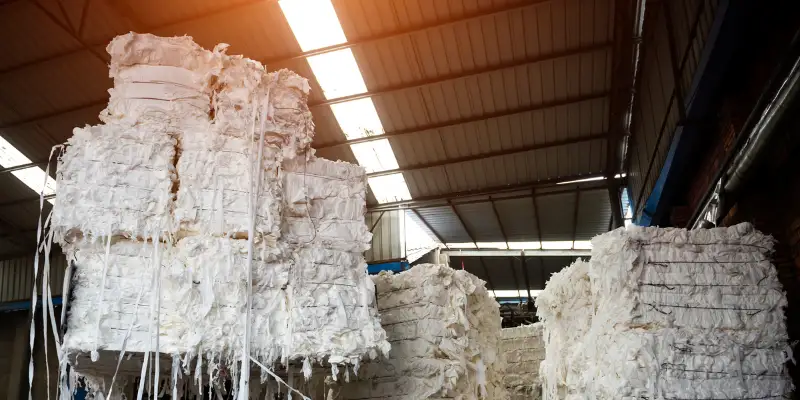

Results
Post-implementation, the Chiang Mai paper mill experienced a significant uptick in production efficiency. The paper’s quality was elevated, characterized by enhanced strength and uniformity, which in turn led to an increase in the mill’s market competitiveness. Moreover, the use of PAPER-MAKING CMC allowed the mill to maintain its environmental commitments, as the product was compliant with their sustainable standards.
The mill’s clients noticed the difference, reporting greater satisfaction with the paper’s consistency and quality. These improvements led to repeat orders and an expansion of the mill’s customer base. The financial impact was clear, with a marked increase in revenue and profitability, while the ecological footprint of the mill remained minimal.
PAPER-MAKING CMC faq
The Paper-making CMC FAQ is a comprehensive guide addressing common questions and providing expert answers about the paper-making process, materials, and troubleshooting techniques, helping both beginners and seasoned professionals.
Yes, food-grade CMC is safe for use in paper products like food packaging, following strict quality control standards.
CMC enhances paper by increasing its strength, smoothness, and printability, as well as reducing porosity.
Absolutely, CMC is effective in improving the quality of recycled paper by restoring its strength and durability.
Our CMC production complies with international environmental standards to minimize ecological impact.
CMC aids in the paper-making process by improving sheet formation, retention, and dewatering efficiency.
Yes, we offer various grades of CMC tailored for use in a range of paper products, from tissue to cardboard.
We have stringent quality control processes in place, from raw materials sourcing to final product testing.
We can work with clients to develop custom CMC formulations to meet specific performance requirements.
Our CMC products have a shelf life of 2 years when stored in a cool, dry place away from direct sunlight.
Our Paper-making CMC can be exported globally, with major export countries including India, Thailand, Malaysia, and others.
contact us
For premium-quality Paper-making Carboxymethyl Cellulose or any inquiries regarding its use and benefits, our team of experts is readily available to provide you with comprehensive assistance and information. Please feel free to reach out for specialized support tailored to your needs.

